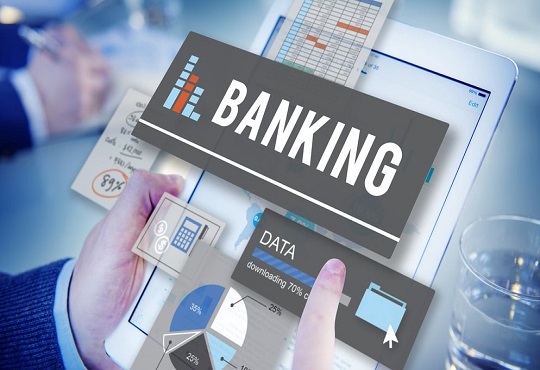
Top 5 Technology Trends in Banking
Vishal Pratap Singh | Tuesday, 05 October 2021, 03:15 IST

In the last decade, there has been an increase in the expectations of consumers from the banks in terms of security and smart services. The relationship between banking and technology has become stronger in these past years. These increased expectations from consumers are forcing banks to initiate an efficient plan through which they invest in digitizing process with the latest technologies. Many technologies in banking sector are being adopted as these technologies help the banks in reducing costs and improving customer experience.
The pressure on banks which perform their day to day tasks traditionally is increasing. “The coming millennial generation has also made banks think about digitizing the entire process as the hackers coming from this generation are way more dangerous. Therefore, banks are also focusing to become smarter with each passing day”, says Rohit Garg, Co-Founder and CEO, Smartcoin.
Cloud Computing
In the recent years, there has been increase in the number of banks which have implemented Cloud Computing. According to a recent study, 32 percent banks were using Cloud Computing in 2019 which increased to 40 percent in the year 2020. Experts believe that Cloud Computing has made it easier to store, manage and access the information with the help of cloud for banks. Also, it ensures smooth transactions and better customer experience by secure online payments. Now, banks have to only pay for the services which they use actively on the cloud on daily basis and hence, cloud computing helps them in cost saving. This technology has increased the turnover of many American and German banks by providing cost effective cloud solutions.
Blockchain
Blockchain is used by banks to keep track of transactions and verify them. Many banks across the world are exploring this technology to streamline their processes and cut costs. This technology has made it easier for the banks to process the payments in a faster and more accurate way. On the other hand, it has also helped the banks to reduce costs of transaction processing and create new products and services, which can ultimately generate new revenue sources. Therefore, it can be said that Blockchain has the potential to reduce the operational costs while improving efficiencies. Blockchain makes it easier for the banks to detect all the fraudulent activities on time and eliminate any kind of risk. This technology is turning out to be a potential gamechanger for the banking sector at present.
Multinational company Accenture conducted a research in which it is found that Blockchain is successful in cutting costs and can save more than 30 percent across the middle and back office. Also, 90 percent banks said that they are exploring Blockchain in conjunction with payment.
Robotic Process Automation (RPA)
Robotic Process Automation helps the banking sector in reducing the errors, operational costs and hence improves the customer experience. RPA can enable robots and virtual assistants to complete repetitive tasks at banks without human intervention. Banks are leveraging this technology to reduce turnaround time and ensure consistent, quick and responsive service to customers. Robotic Process Automation handles all the repetitive and mundane tasks of the banks. In this way, all the intelligent and bright minded employees of the bank can be assigned by more important tasks which can generate high value for the organisation. By automating the selective tasks to be performed by RPA, banks can also work with less number of employees.
Artificial Intelligence (AI)
Slowly but steadily banks have started using Artificial Intelligence in their day to day tasks as it provides instant and more personalized experience to customers. This technology has helped the banks and is expected to bring about cost savings of up to $440 billion by 2023. Nowadays, chatbots and robo-assistants are available for customers to help them out if they face any query. This technology has enhanced the security system of the banks and provided a fraud detection system, thereby making it easier for the customers to perform banking operations smoothly.
Big Data
Big Data is being leveraged by the banking sector to provide a much needed safer experience to the customers. Big Data analytics is helpful for the banks to monitor risky investments in a better way. If there are any suspicious activities happening in the bank, then Big Data analytics is able to detect it easily and pass this message to the concerned officers. A recent study shows that banks which are using Big Data are less prone to any malicious or fraudulent activities. So, in the coming years, most likely people are going to see an increase in the use of this technology in almost every bank.
Expectations from Future
It has always been the case that due to increasing fraudulent activities in banks by the hackers or conmen, customers are demanding more transparency and convenience from the banks to manage their money. In the last few years, banks have started taking these demands seriously and worked on its weak areas. Banks are going to raise the bar in terms of providing security and personalized experience to each individual customer in the coming future.
CIO Viewpoint
7 Thoughts on Preparedness for a Slow
By Robin Joy, CIO, V-Guard
Securing your Cloud Infrastructure - A Journey...
By Vishal Katial, VP - Information Technology, Ugam
Achieve Information Security with Converged...
By Deena Dayalan K, Director- IT, Sears India
CXO Insights
Managing Life Cycle - Key for Sustainability
By Jaiganesh Murugesan, Sr. Director, IT for Engineering and Supply Chain, GE Transportation
Futureproof your business with lasting agility
By Subrato Bandhu, Regional VP, OutSystems
Common Pitfalls to Avoid While Managing...








